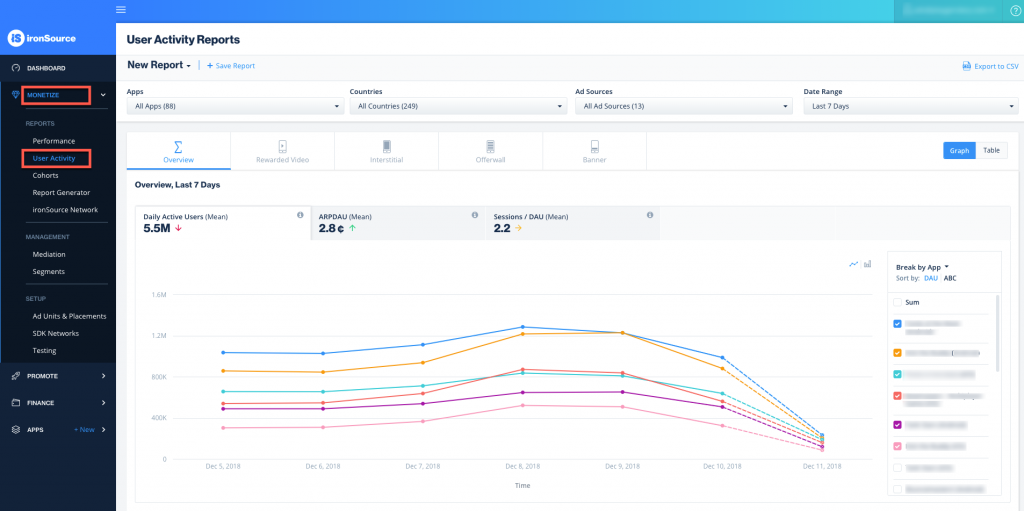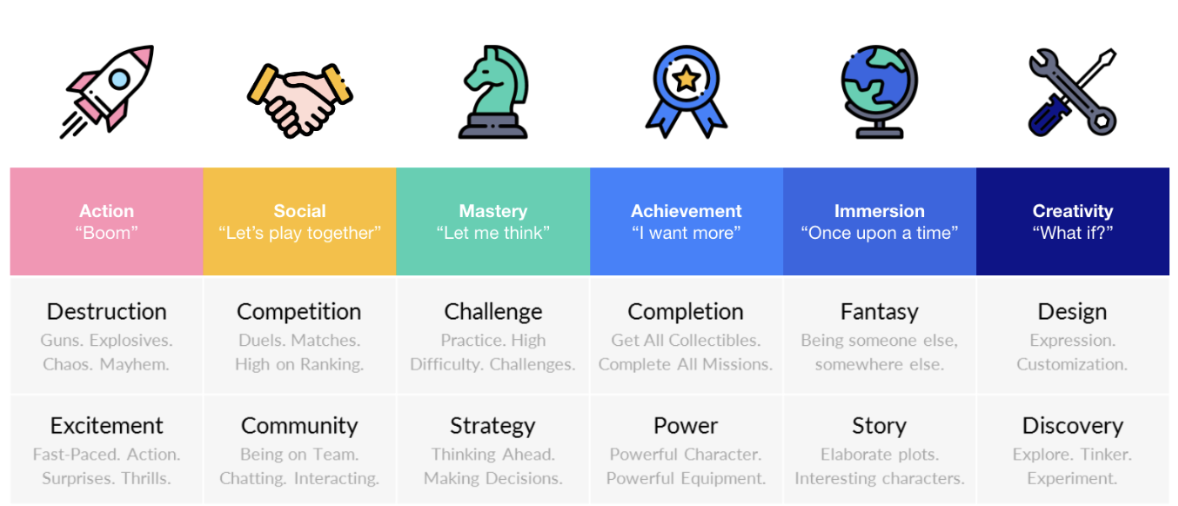Growing a mobile game is a complex process with many steps. As a game design consultant, it’s my job to analyze each game’s revenue, so I focus on two key steps: finding out which pieces of a monetization strategy might be missing, and which can be moved around. This includes implementing and optimizing ad placement strategies, finding industry benchmarks, and more.
In this article, I’ll share what game developers can and should be doing to maximize their performance, and as a result their revenue - all broken down into three clear steps. Let’s dive in.
Tip #1: Analyze your app’s performance
To successfully boost your revenue, it’s critical to first understand what success looks like - that’s where benchmarks come in. Industry monetization benchmarks are available from a variety of different sources, like data.ai, Sensor Tower, and other industry reports, like the Unity Gaming Report. Unity LevelPlay developers, for example, can reach out to their account managers to access monetization benchmarks - like engagement rate, ARPDAU, and eCPM - all broken down by genre and geo.
To get an even clearer understanding of your performance, you should see how your performance compares to your competitors’. For example, a game design consultant can give you anonymized competitor monetization data. This can help you understand which monetization challenges the games in your genre need to address, and how they compare to yours.
As you analyze your data, you should be able to translate it into clear, actionable words
- Anna Popereko, Senior Game Designer at Unity
Once you have your app’s monetization benchmarks, you can compare them to your own data and user behavior. Make sure to focus on these KPIs at both the app level and placement level:
- Engagement rate (impressions/daily active users): how many players actually saw your ads.
- Usage rate (impressions/daily engaged users): how many ads an engaged player sees per day
As you analyze your data, you should be able to translate it into clear, actionable words. For example, if you notice that your engagement rate is relatively low, but your usage rate is high, it means many users aren’t finding your placement - but the ones who found it are very engaged. This might be because your placement is not visible to the user. In this case, make sure to update your placement so that it is accessible and easy for the user to reach. Try A/B testing more noticeable locations and button designs.
To get a clear picture of your performance at the placement level, make sure to focus on your main geo (e.g. the US), and collect data over a large enough period to show statistically significant data. Unity LevelPlay developers can access this information on the user activity page.
Make sure to keep an eye out for irregularities, like spikes, drops, or uneven behavior. For example, you’d naturally expect a spike on a weekend (when user activity is high), but a spike on a Monday might raise some eyebrows.

Tip #2: Be a conscious player
To fully optimize your game experience, you need to understand it - so it’s critical to put yourself in your players’ shoes, play your game, and ask yourself:
- What is the player’s motivation to continue playing? There are many different types of user motivations (example below). If you have a player vs. player game, for example, players are most likely motivated by action. Analyzing motivations, you can be better prepared to give players exactly what they want and need to continue enjoying your game, like upgrades, weapons, or powerful characters.

- What keeps players from moving forward in your game? Pay attention to the hurdles keeping your players from moving forward in the game. For example, if players don’t have enough currency to start the next level, you can add a rewarded video placement at the end of each level where they can double their currency.
- How do ad placements contribute to the users’ experience? Ad experience is a critical part of the user experience, so make sure to look critically at exactly where and when interstitials and rewarded videos pop up. If players are getting what they need to advance in the game and your user ad experience is overall positive, is that reflected in the numbers (e.g. user engagement rate, impressions/DEU)?
Next, play your competitor’s games, and ask yourself the same questions about your competitors’ ad experience:
- How does your competitors’ ad experience compare to yours? Think: placement quality, timing, type, location, and frequency (capping and pacing)
- If their placements are different, why do you think they chose this strategy? How do their placements make you feel as a player?
Tip #3: Get inspired
The more games you explore in your genre, the bigger your library of inspiration. Ask yourself:
- What are other games doing that I can be doing? Let’s say you have a task-oriented game, and your players’ main motivation is achievement (they want to collect as many items as possible). In this case, you should check out what other soft currency/items your competitors are using - you might be inspired to expand your options. You can even explore beyond your own genre and see how other games are rewarding their users’ specific motivations.
- How do other games motivate their players? Check out how your competitor incentivizes their players to move forward in the game - for example, do they also put their items and upgrades in rewarded videos?
"Whether it be from your game or your competitors' games, good ideas can come from anywhere - and the more you look at, and deeper you analyze, the easier it is to get inspired."
- Anna Popereko, Senior Game Designer at Unity
If you’re inspired by one of your competitor’s ad placements, you can try A/B testing it in your game. Here’s an example: one of our partners, a major mobile shooter game, was looking to increase engagement for their ad placements, especially their gacha (chest) ad placement in the store. When we observed games from other genres, we noticed how one racing game strategically increased traffic to their store by refreshing their store items.
While the two games aren’t from the same genre, players from both the RPG and racing game are motivated by achievement. Both games contain hundreds of items (e.g. upgrades, collectables) that players don’t necessarily need to be able to play, yet they’re still motivated to collect as many as possible. And since their player motivations are similar, strategies from one game can be applied to the other.
When we presented this idea to our RPG partner, they were inspired to start changing their collectables on a monthly basis. We found that every time we changed the collectables in the store, interest in the store increased - as a result, the placement’s engagement rate would spike. Best of all, since we rotated and recycled the same assets monthly, we boosted the placement’s engagement without requiring any extra resources.
When it comes to optimizing your game, there’s always room for improvement. Whether it be from your game or your competitors' games, good ideas can come from anywhere - and the more you look at, and deeper you analyze, the easier it is to get inspired.




